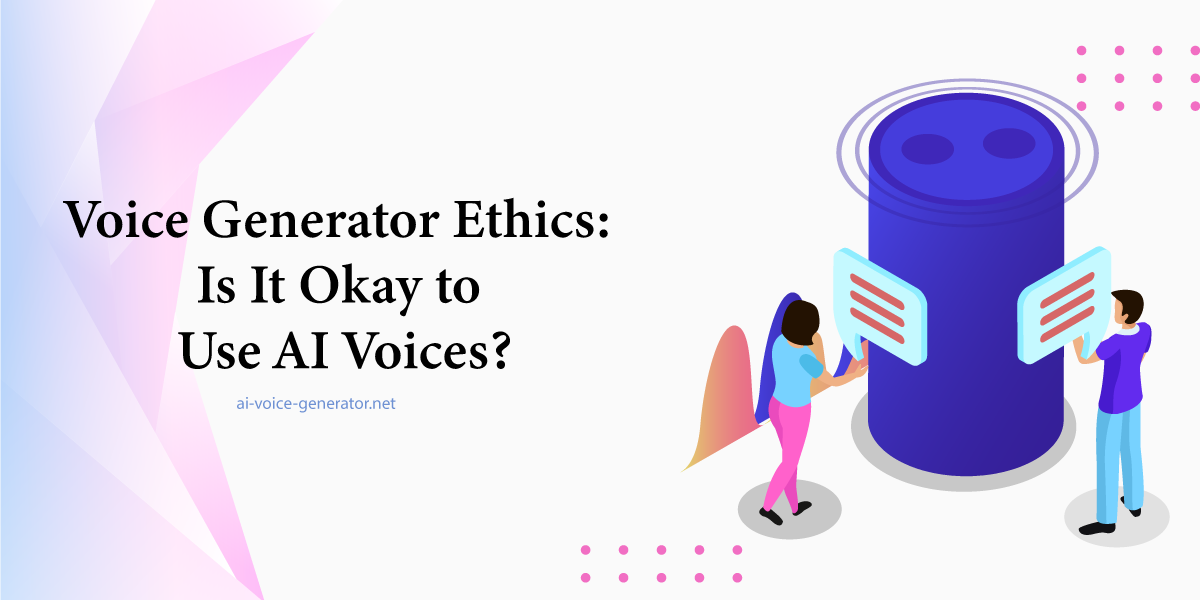Ai Voice Generator: Voices That Never Leave the Grave
In recent years, the ai voice generator has transformed from a novel tech curiosity into a profound tool with emotional and ethical implications. One of the most compelling and sensitive uses of this technology is in the realm of grief tech voice replication, where synthetic voices offer a way for people to reconnect with the vocal presence of loved ones who have passed away. This intersection of artificial intelligence and human emotion raises unique questions about identity, memory, and digital preservation.
At its core, an ai voice generator uses complex algorithms and vast datasets to recreate human speech patterns, but the application in grief technology goes far beyond simple mimicry. It challenges traditional ideas about what it means to “hear” a voice again and prompts important conversations about the ethics of replicating voices of those no longer with us. In this article, we’ll explore the technology behind these synthetic voices, the ethical and legal frameworks emerging around it, and how society is adapting to this new frontier in voice cloning technology.
Understanding Grief Tech and Voice Cloning Technology
Grief tech refers to the growing use of technology designed to help individuals process and cope with loss. Among the most innovative tools in this space is voice cloning technology, which allows for the creation of a digital voice that closely mimics the speech patterns, tone, and inflections of a deceased person. Unlike traditional recordings, these synthetic voices can be programmed to say new phrases or respond interactively, offering a new form of comfort for those mourning.
Behind the scenes, voice cloning technology relies on machine learning models trained on samples of a person’s voice, often requiring only a limited amount of audio to produce remarkably lifelike results. This process, however, isn’t without challenges. The voice must sound authentic, natural, and emotionally resonant—a feat that involves overcoming limitations inherent in AI voice accent synthesis, where the system must replicate subtle regional accents and individual speech nuances.
The rise of grief tech voice replication raises complex issues of consent and authenticity. Families may choose to preserve a loved one’s voice for future generations, but questions arise about who controls these voices and how they can be used or misused. These concerns highlight the importance of developing strong synthetic voice regulation to protect individuals’ rights and maintain ethical standards.
The Role of Synthetic Voice Regulation
As synthetic voices become more advanced, the risks associated with their misuse grow. The potential for voice deepfakes—audio clips where a person’s voice is convincingly mimicked without their consent—has led to calls for tighter synthetic voice regulation worldwide. This regulation aims to ensure that AI-generated voices are used responsibly and with respect for privacy and intellectual property.
Legislators and tech companies are working on frameworks that balance innovation with safety, including mandates for transparency and user consent. In particular, voice deepfake detection technologies are being integrated into platforms to identify and flag synthetic audio, helping to combat fraud, misinformation, and identity theft.
These safeguards are critical in grief tech as well. The deeply personal nature of replicating a deceased person’s voice demands strict ethical oversight. Families and companies involved in grief tech voice replication must navigate these regulations carefully to prevent exploitation while respecting the memory and dignity of the departed.
Emotional Authenticity: The Challenge of Emotion‑Aware Voice Assistant Technology
One of the greatest challenges in creating synthetic voices for grief tech is replicating the emotional depth that human voices naturally convey. Emotion is a complex blend of tone, rhythm, and subtle inflections that machines struggle to reproduce convincingly. Recent advances in emotion‑aware voice assistant technology have aimed to address this, enabling AI voices to adjust their responses based on emotional context.
This development is particularly relevant for grief tech, where a voice is not just a sound but a carrier of memories and feelings. The ability to convey empathy, warmth, and subtle emotional cues can transform a synthetic voice from a cold simulation into a meaningful presence. Still, the technology remains imperfect, and ongoing research is focused on bridging the gap between human and synthetic emotional expression.
Addressing AI Accent Bias and Sociolinguistic Influence in AI Voices
Another important aspect is the inclusivity of synthetic voices. The issue of AI speech accent bias means that many AI voices may default to standard or dominant accents, potentially alienating users who speak with regional dialects or less commonly represented accents. This problem extends to AI voice accent synthesis, where creating a truly diverse range of accents remains a technical and sociocultural challenge.
Inclusive AI voice design is critical in grief tech, where the voice of a loved one might carry specific linguistic traits that are deeply tied to identity and culture. Without careful attention to accent accuracy and sociolinguistic context, synthetic voices risk sounding unnatural or even disrespectful. Researchers and developers are increasingly aware of this and are working toward inclusive AI voice design practices that respect linguistic diversity and reduce bias.
Moreover, the sociolinguistic influence AI voices have on users is an emerging field of study. Listening repeatedly to a synthetic voice may subtly shape how individuals speak or perceive speech norms, affecting both language and social identity. These influences reinforce the need for thoughtful, ethical voice synthesis design that considers not only technology but its human impact.
Deepfake Voice Protection and Synthetic Voice Watermarking
To safeguard against misuse, advanced techniques like synthetic voice watermarking are being developed. These watermarks are inaudible markers embedded in AI-generated voices that help identify the audio as synthetic. This technology supports deepfake voice protection by allowing platforms and users to verify the authenticity of audio content.
Watermarking is especially important in grief tech, where synthetic voices are used sensitively. It offers a layer of security and transparency, reassuring users that the voice they interact with is a controlled, ethical reproduction and not part of malicious deepfake schemes. Coupled with voice deepfake detection, these tools form a critical defense line against the unauthorized use of synthetic voices.
Speech-to-Speech Voice Cloning: The Future of Voice Replication
A fascinating evolution in voice synthesis is speech-to-speech voice cloning, where an AI system can take an input voice and convert it directly into another synthetic voice in real-time or near-real-time. This technology opens new possibilities in grief tech, allowing for more dynamic interactions and personalized experiences.
For example, it could enable family members to “speak” with a deceased loved one’s voice in new ways, facilitating conversations that were previously impossible. However, this also raises significant ethical questions about the permanence and control of digital voices and the psychological effects on users.
The growing sophistication of speech-to-speech voice cloning highlights the need for robust ethical frameworks and careful consideration of user well-being as these technologies become more mainstream.
The Human Side of AI Voice Generators in Grief Tech
While the technology behind AI voice generation is undeniably impressive, its true significance lies in the human experience. The ability to preserve and interact with the voices of those we have lost offers comfort, nostalgia, and a new form of connection. Yet, this connection is complex and must be handled with care.
Grief is deeply personal, and synthetic voices cannot replace the nuances of human interaction or the living presence of a person. They serve instead as tools for remembrance and healing, when used thoughtfully. Understanding the balance between technological possibilities and emotional realities is crucial for users, families, and developers alike.
If you want to explore the possibilities of AI voice generation for personal or professional use, consider trying a trusted and secure platform like Ai Voice Generator, which offers advanced voice synthesis capabilities with a focus on ethical use and voice quality.
Ethical Concerns and Future Directions
As AI voice technology continues to evolve, the ethical implications surrounding grief tech and voice replication will remain at the forefront. Issues such as consent, control, emotional dependency, and digital legacy are complex and often uncharted.
It is essential for creators and users to engage in ongoing dialogue about these challenges, ensuring transparency and respect for all parties involved. Moving forward, collaboration between technologists, ethicists, psychologists, and the broader community will help shape the responsible use of synthetic voice technology.
FAQs
It is the use of AI voice cloning to recreate the voice of a deceased person for emotional support and remembrance.
It embeds an inaudible marker in AI-generated voices to verify authenticity and prevent misuse.
Recent emotion‑aware voice assistant advances help AI convey emotional nuance, but perfect replication remains challenging.
It refers to the tendency of AI voices to default to common accents, often overlooking regional or less dominant accents.
Ethics depend on consent and use context; it raises questions about control and emotional effects that need careful consideration.
Conclusion
The use of an ai voice generator in grief tech offers a powerful way to preserve the voices of loved ones, creating lasting connections that transcend physical absence. However, this remarkable technology also brings with it serious ethical responsibilities, from managing synthetic voice regulation to addressing the emotional authenticity and inclusivity of synthetic voices. As society navigates this evolving landscape, the balance between innovation and respect for human dignity remains essential.
By embracing thoughtful design, robust safeguards like deepfake voice protection, and open conversations about consent and impact, we can ensure that synthetic voices become a source of comfort rather than controversy. The future of voice replication is both promising and complex, but with careful stewardship, it can honor memories while protecting the integrity of every voice it recreates.

